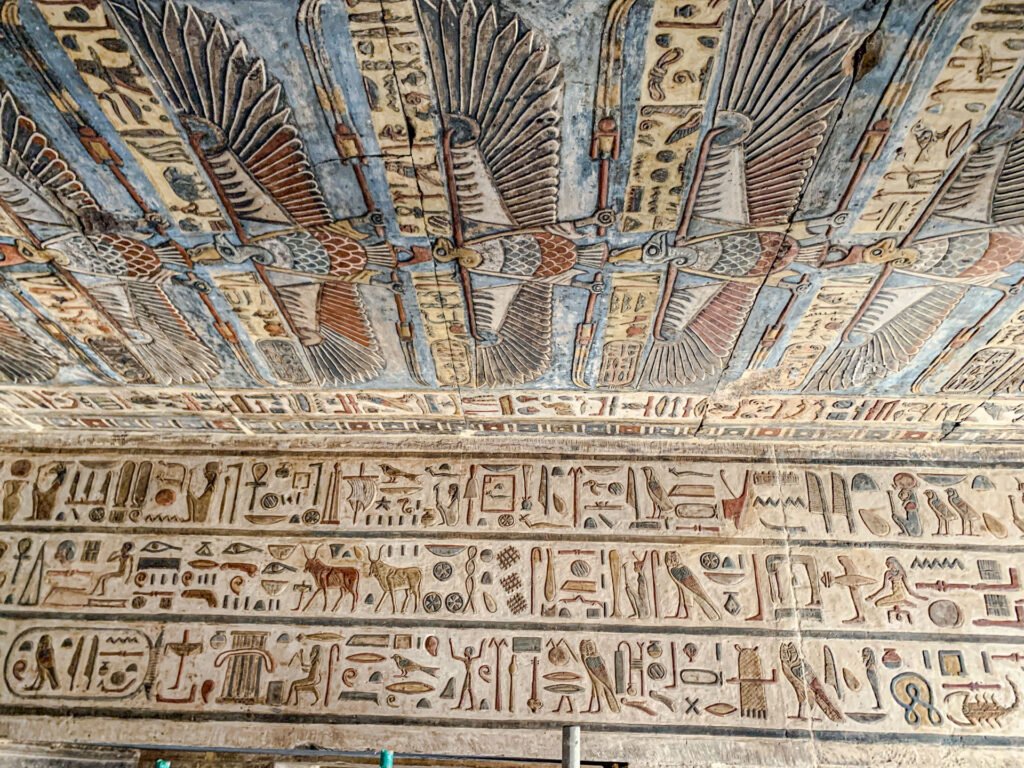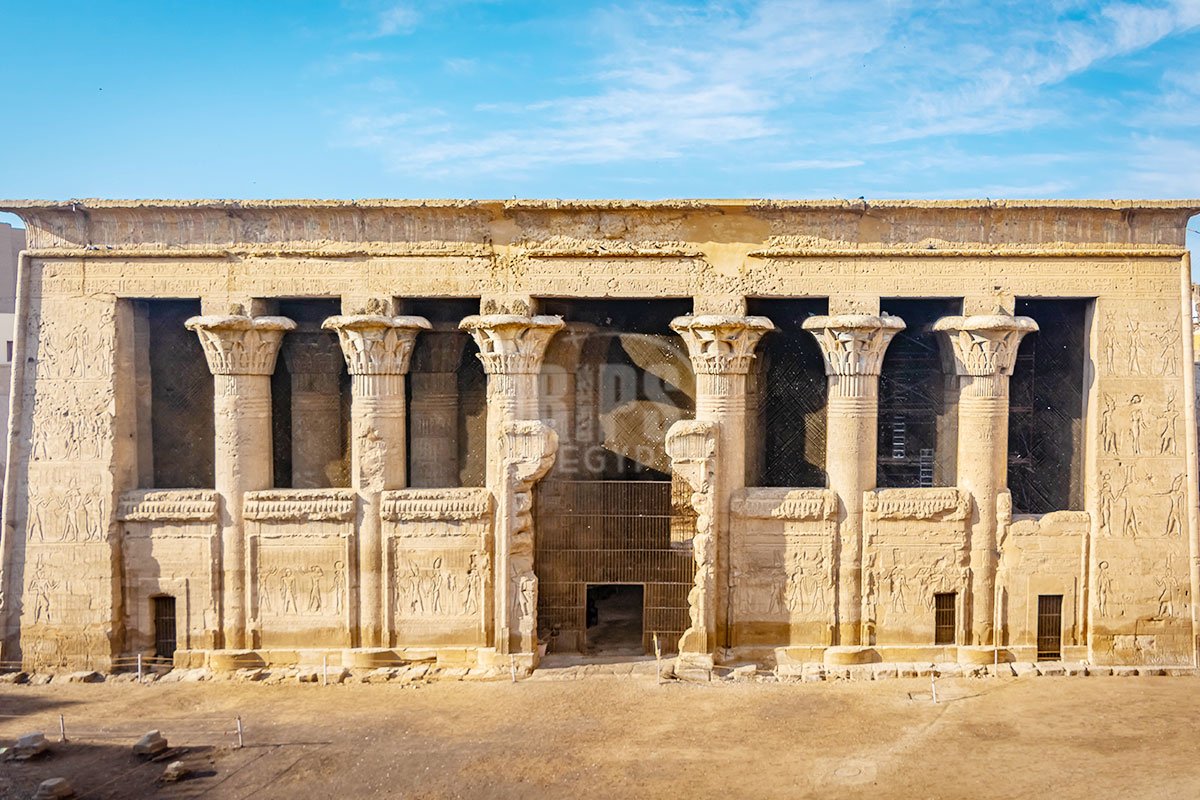Esna Temple

The Esna Temple is located in the city of Esna, about 50 kilometers south of Luxor. Inscriptions and writings were added during the Ptolemaic era, particularly during the reign of Ptolemy VI, and remained until the Roman period around the 3rd century AD.
The Esna Temple is one of six remaining temples from the Greek and Roman periods, alongside the temples of Philae, Kom Ombo, Edfu, Dendera, and Koptos. Also known as the Temple of Khnum, it is renowned for its beautiful location, the grandeur of its architecture and design, and the stunning inscriptions, colors, and decorations inside.
Built from sandstone, the temple’s inscriptions are written in Ptolemaic hieroglyphs. It was an important complex that included priestly residences, various production facilities, and storage buildings, making it a major cultural, economic, and religious center in antiquity.
What remains today is mainly the hypostyle hall dedicated to Khnum. A stele inscribed with the name of Amenophis II is located here, indicating the presence of an older structure predating this king’s era.
The original temple was completely destroyed, and its stones were reused in building the current temple during the Ptolemaic period. The roof of this hall still stands, supported by 24 columns, each about 13 meters high, with elaborate composite capitals featuring plant motifs of great splendor and beauty.
The temple was connected to the Nile by a ceremonial corridor. The oldest part is the western rear wall, which might have served as the temple’s original facade in ancient times. This wall bears images of Ptolemy VI and VIII. The current temple covers only about a quarter of the original temple’s area and size.
Restoration Project
In a joint project between the Ministry of Tourism and Antiquities and the University of Tübingen, the Supreme Council of Antiquities launched a comprehensive restoration project. The goal was to remove centuries of dirt to restore the temple’s inscriptions and colors to their original splendor, with full photographic documentation.
For the first time, the team uncovered not only depictions of animals and birds but also an image of the zodiac on the ceiling of the hypostyle hall’s south side. This zodiac shows the 12 astrological signs from Aries to Pisces, as well as some outer planets and stars used for timekeeping.
Top Hurghada Excursions
-
Private boat tour Hurghada
-
Private snorkeling tour Hurghada
-
Orange Beach Hurghada

